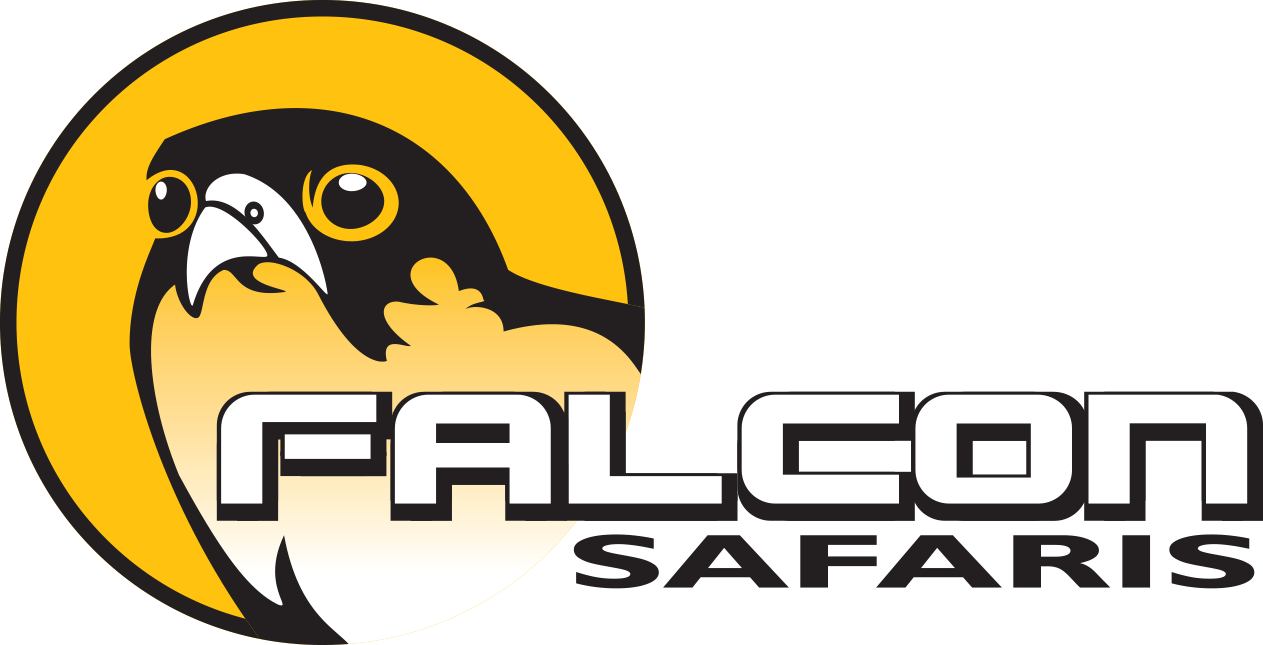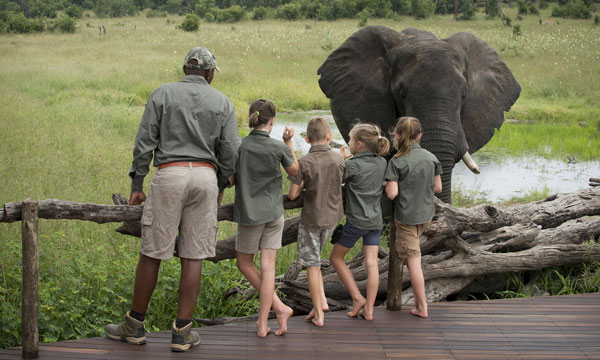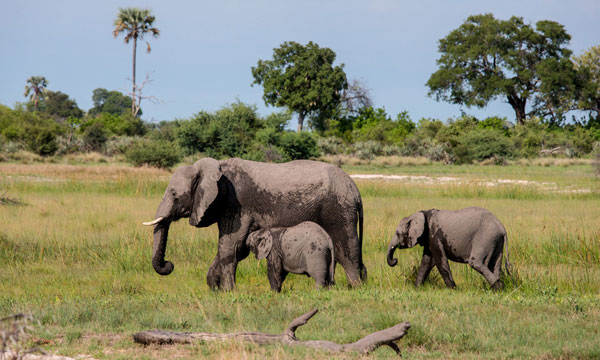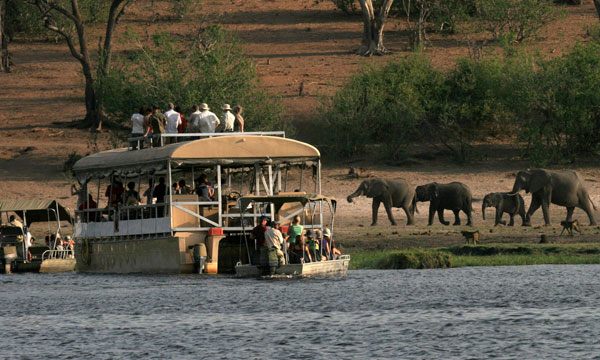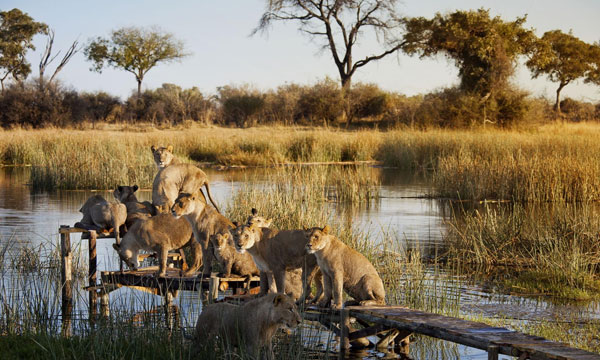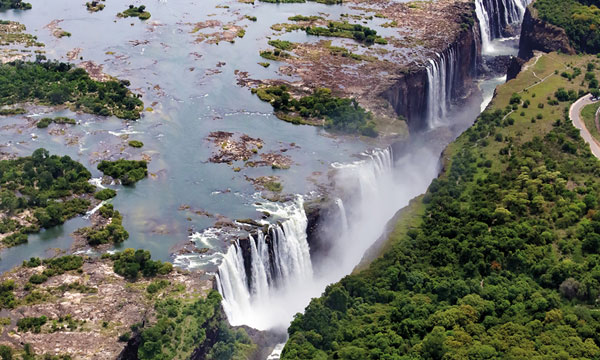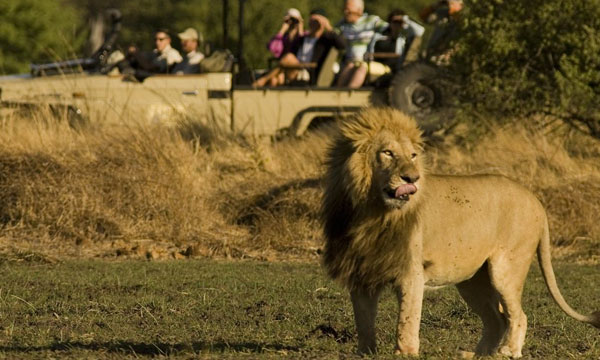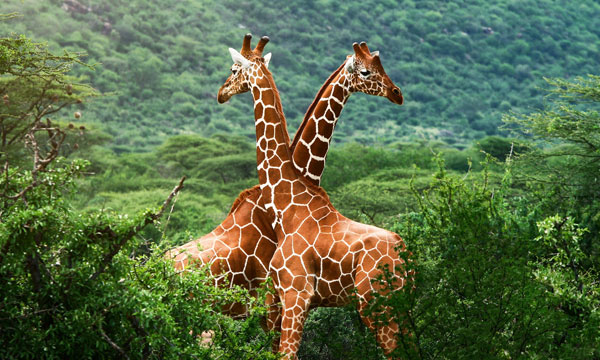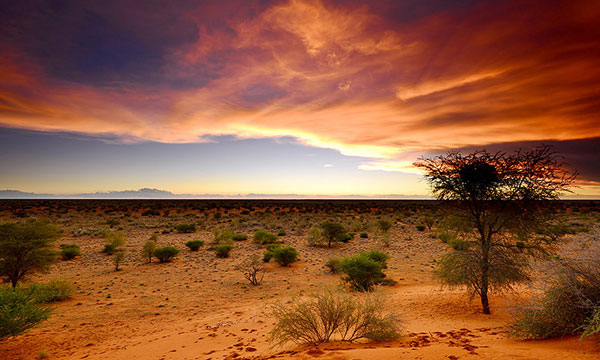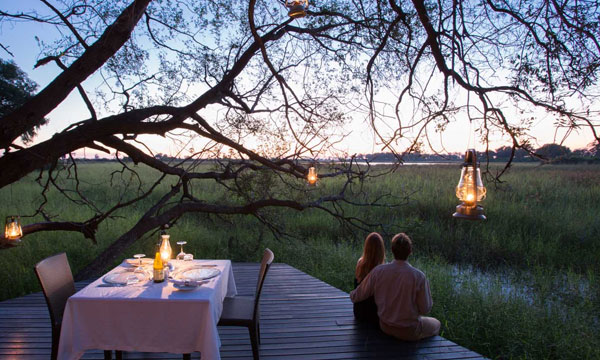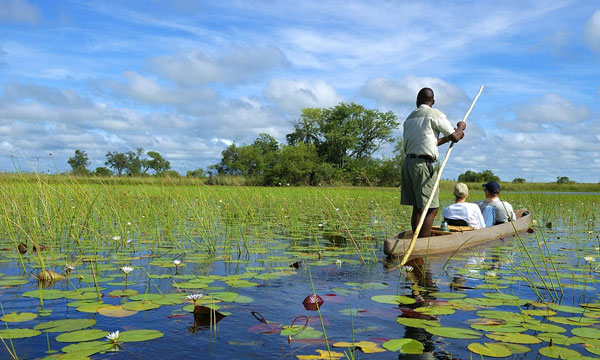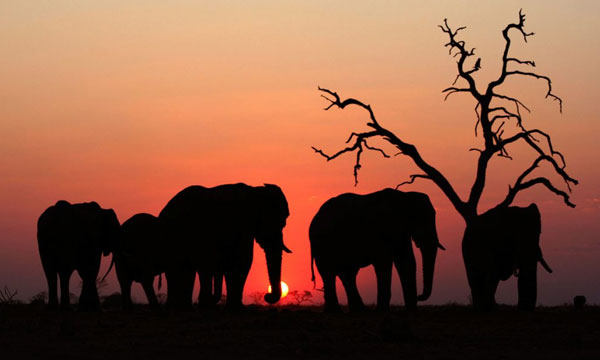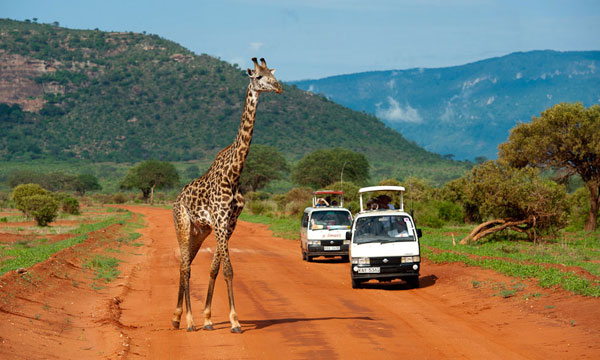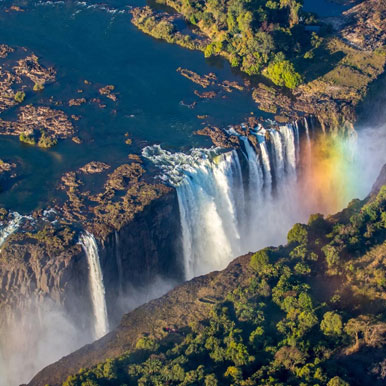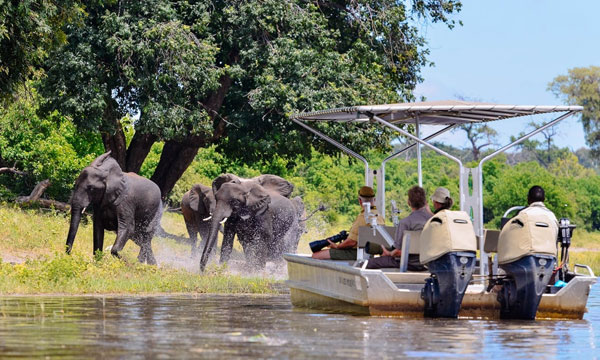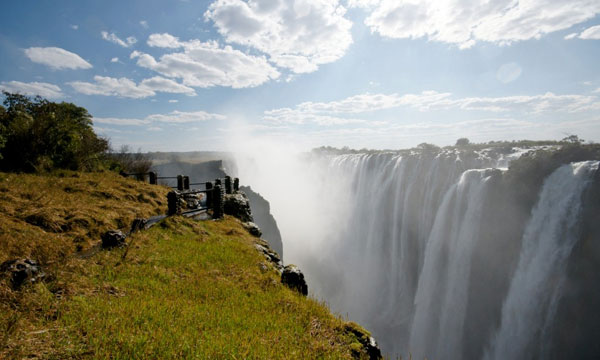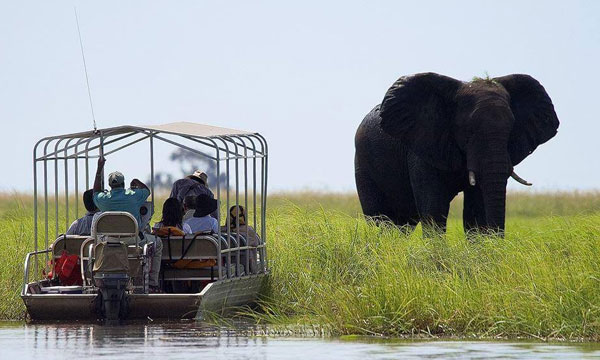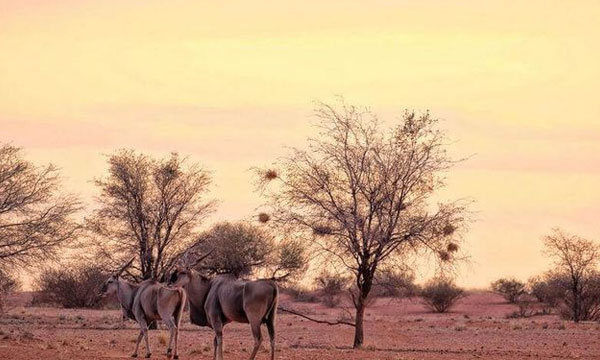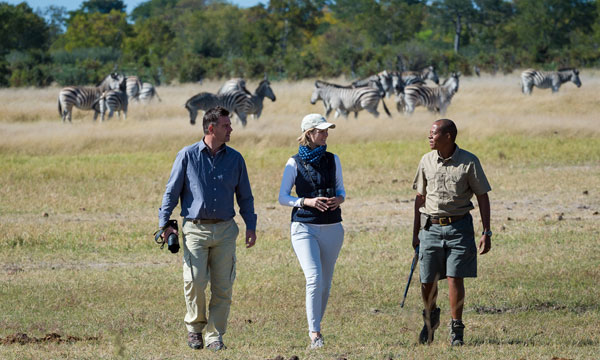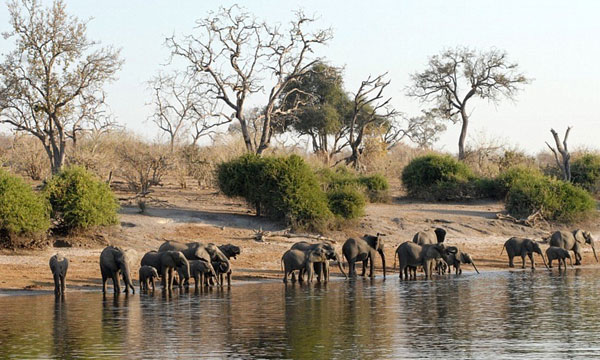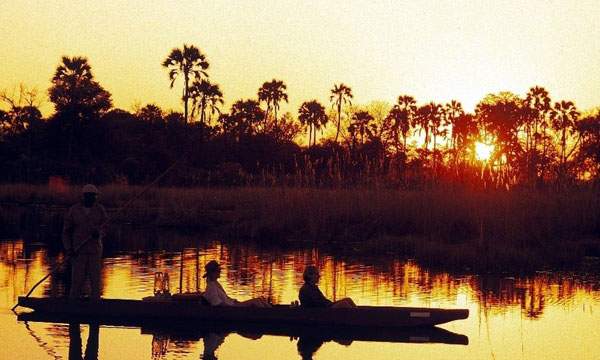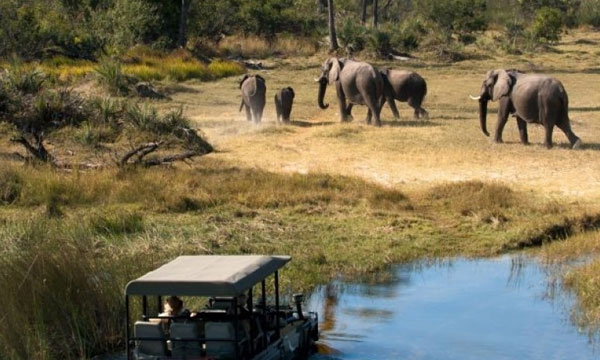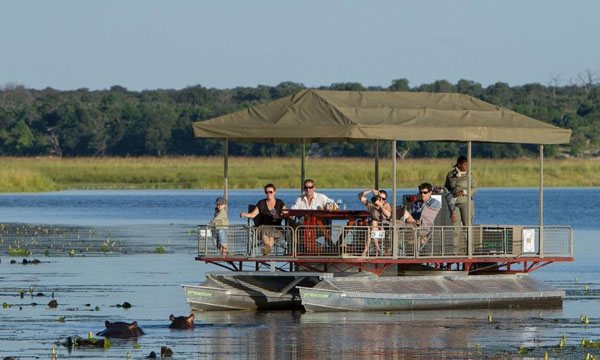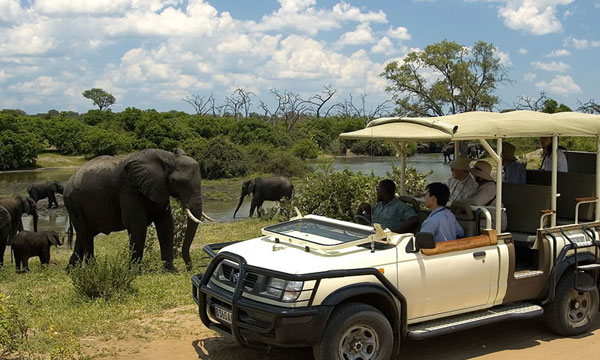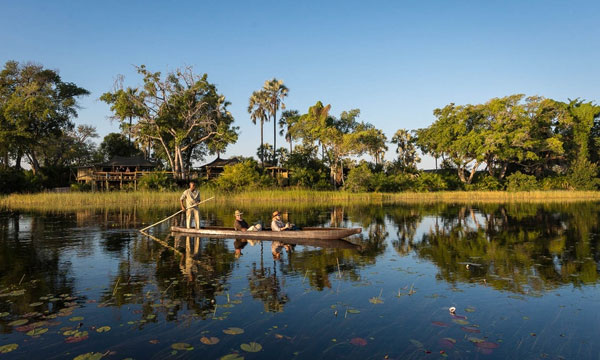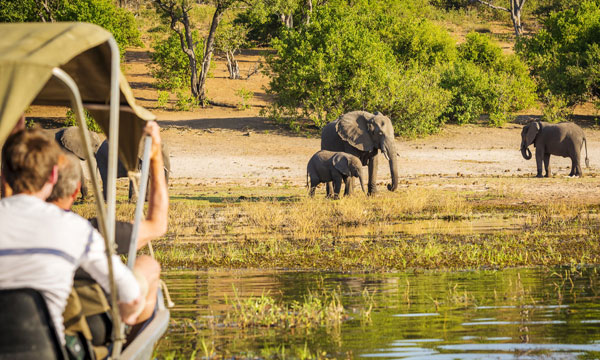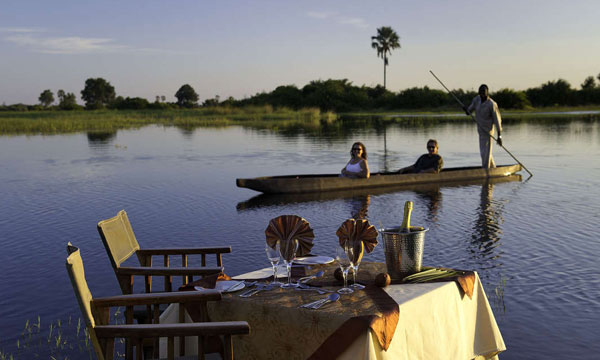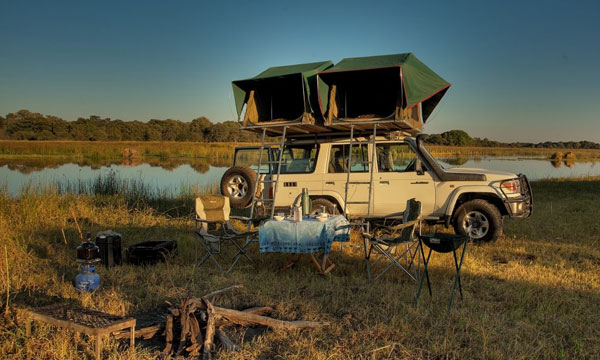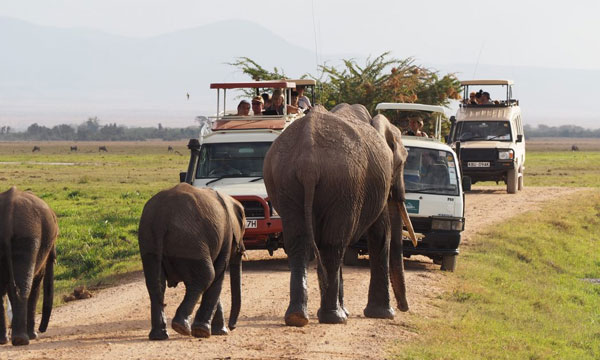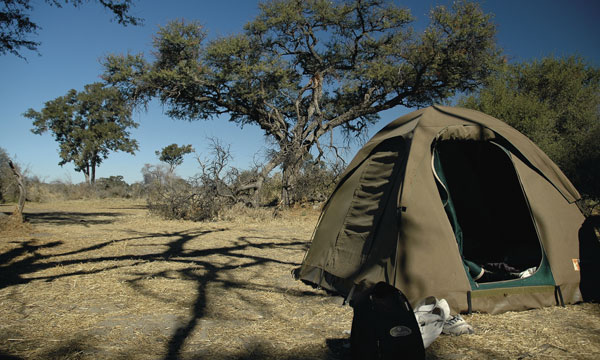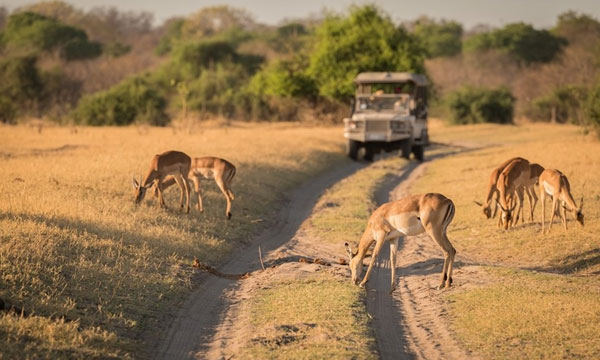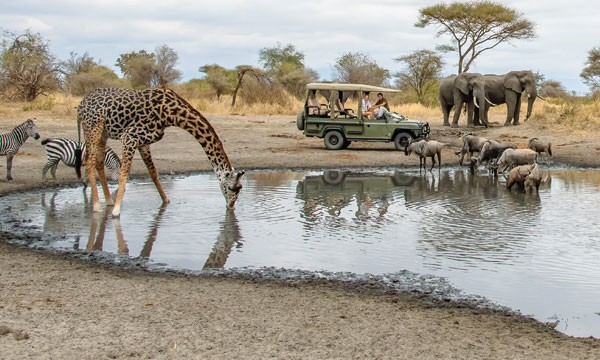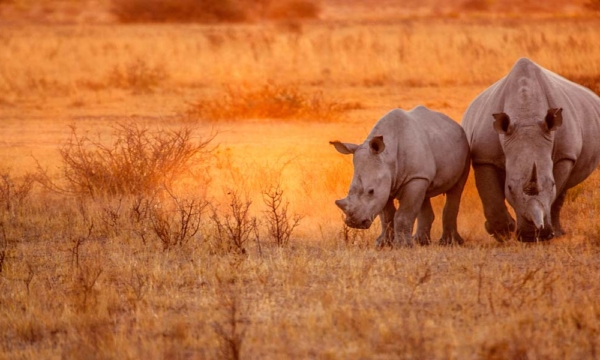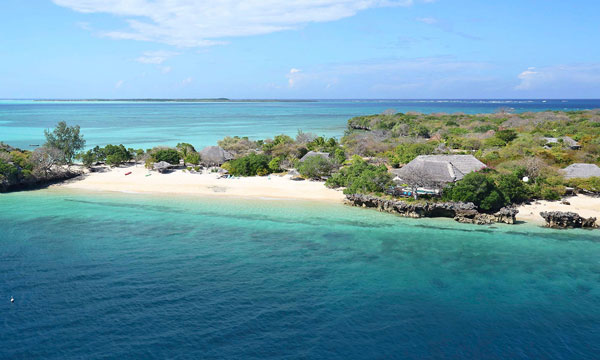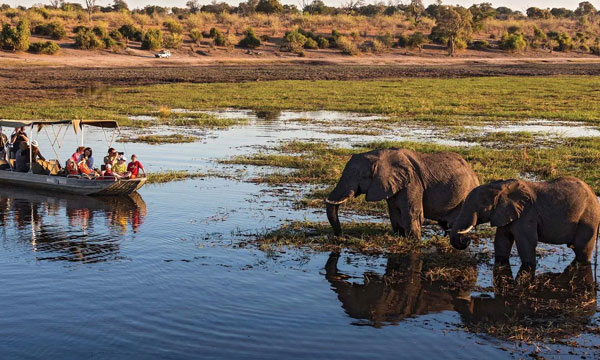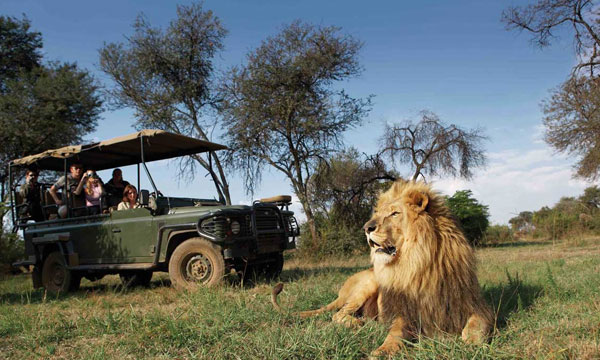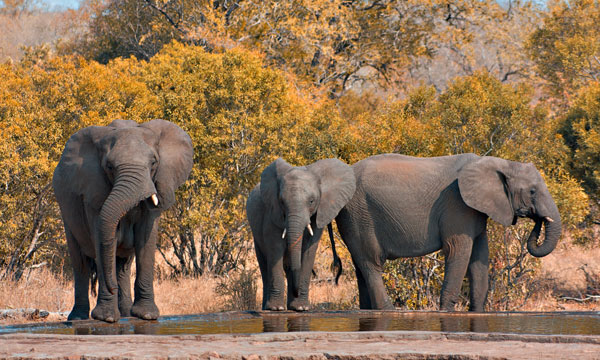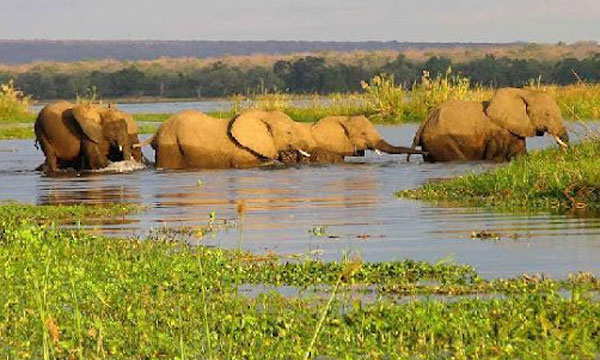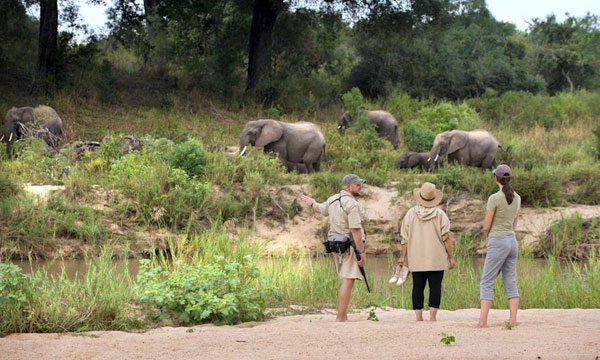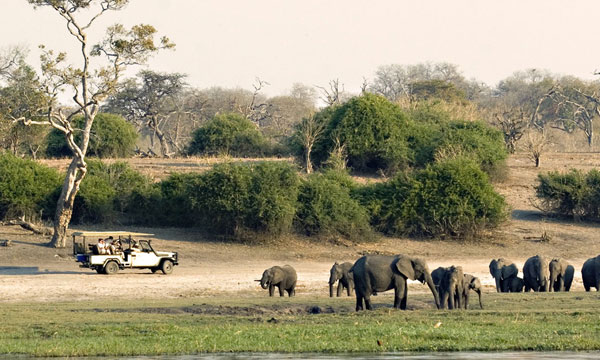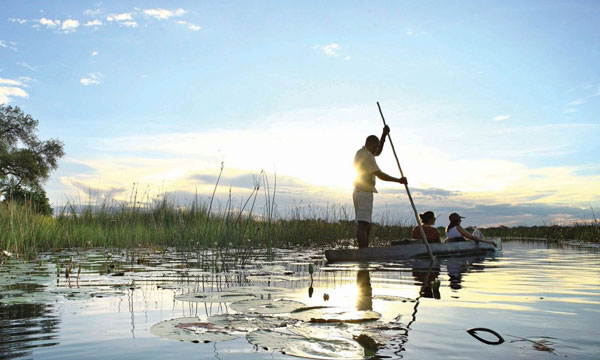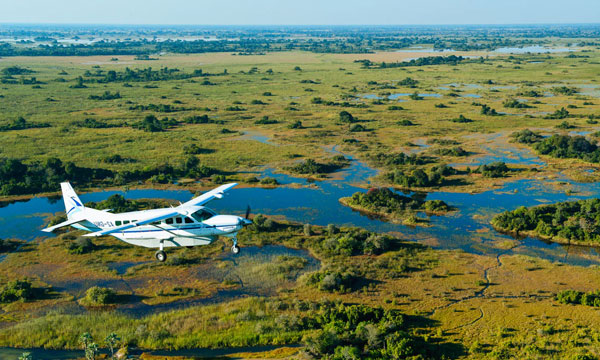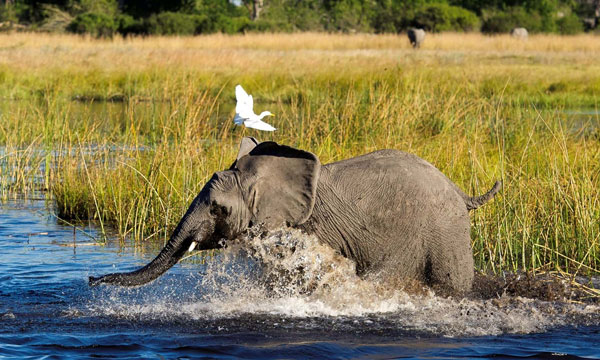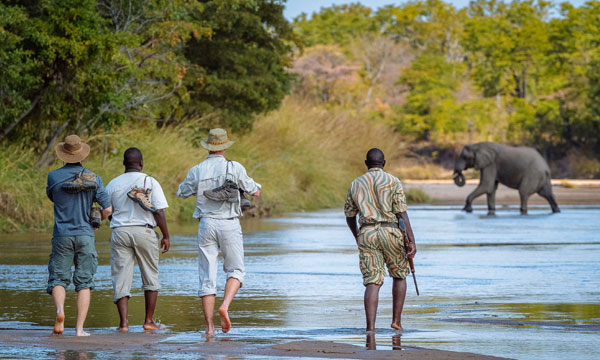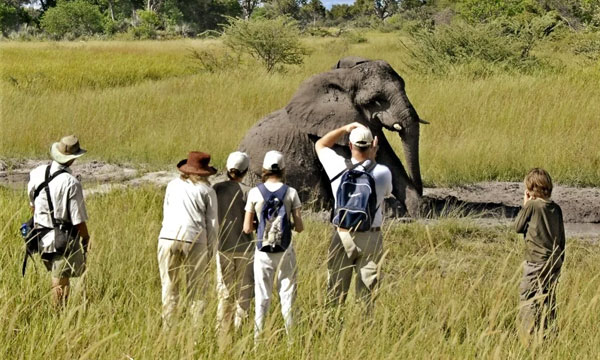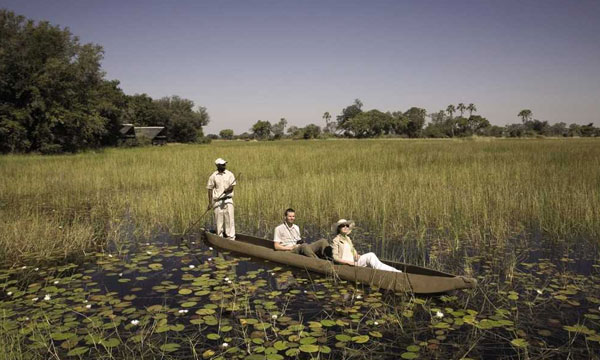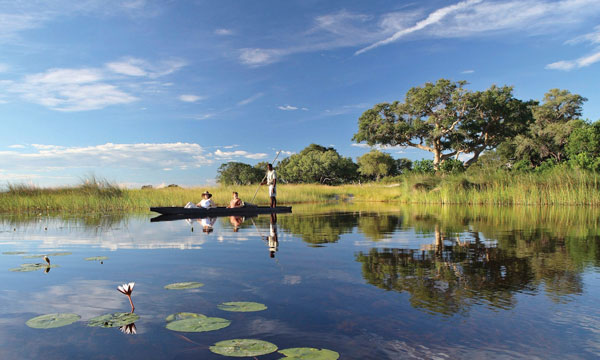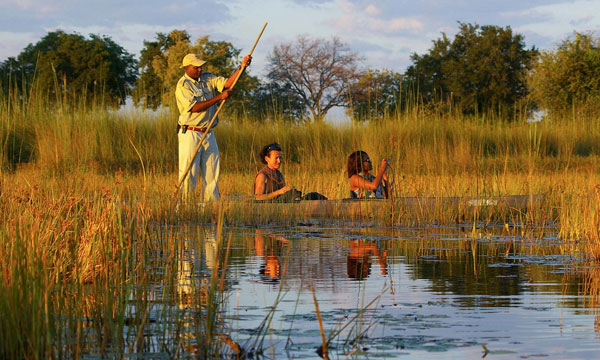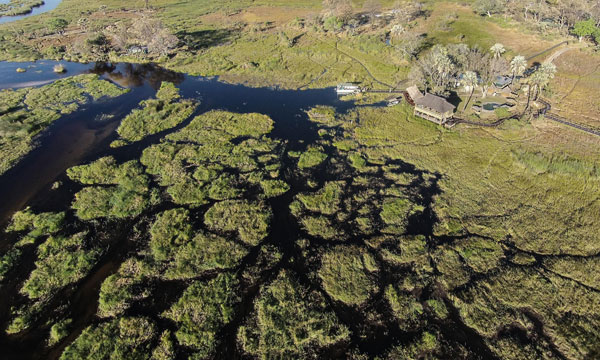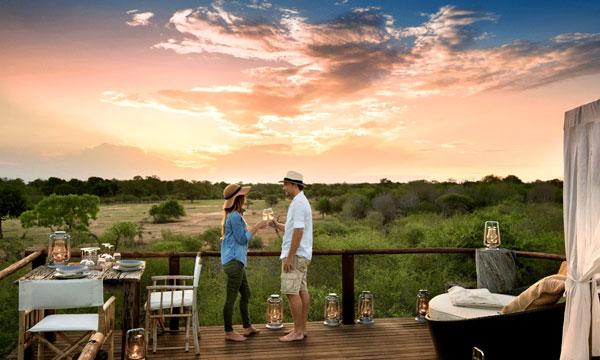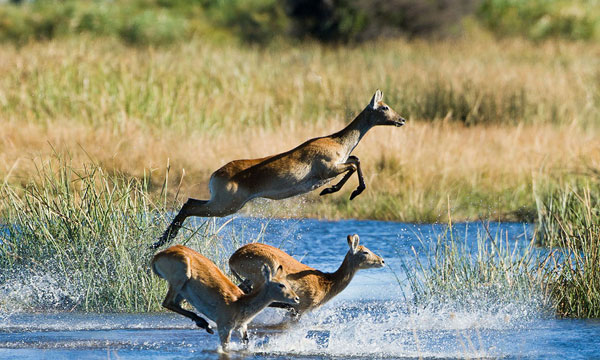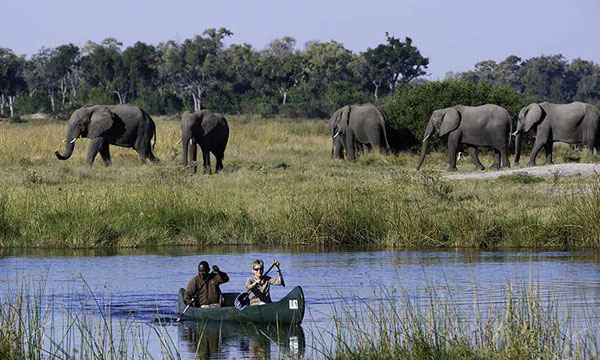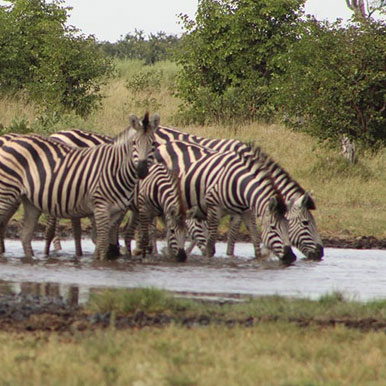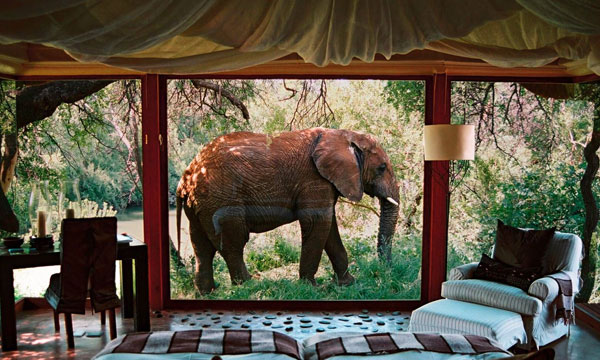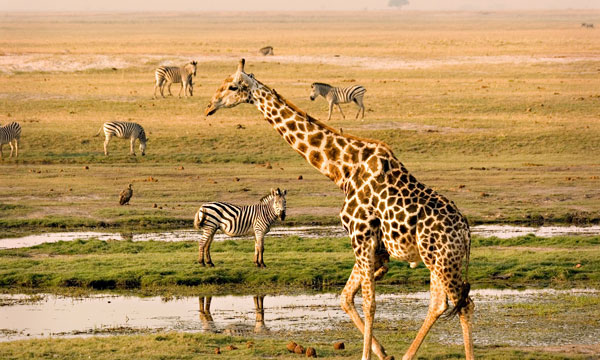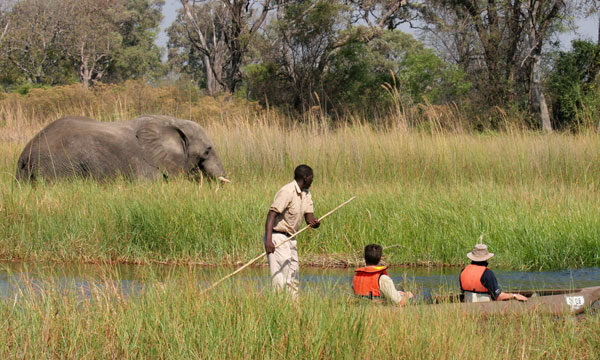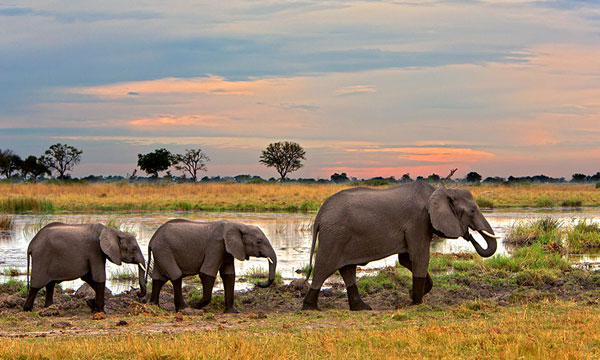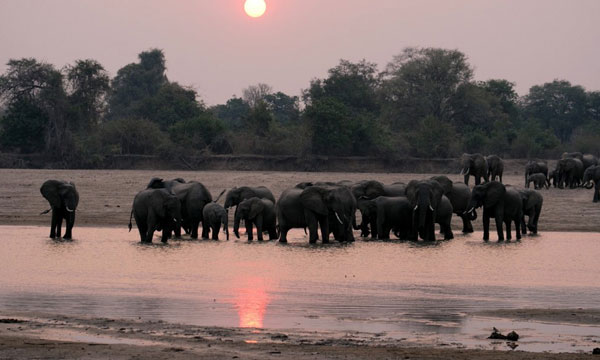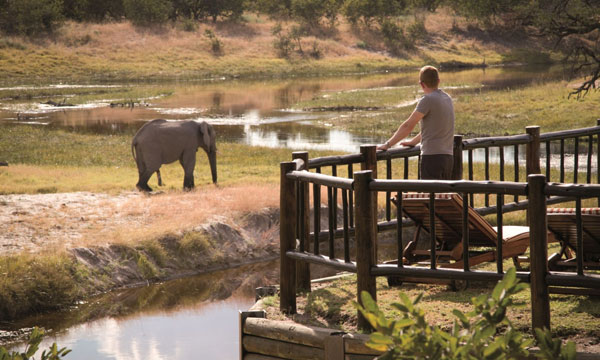Call Us
8:00am - 17:00PM

Gaborone
About Gaborone
Gaborone is the capital city of Botswana located 15 kilometers from the South African border in the country's southeast. Because of the pre-existing administrative offices, close proximity to the railway line, South Africa, and most importantly, proximity to the Ngotwana river and eventual construction of the Gaborone Dam, it was chosen as the Capital in the early 1960s.
Botswana Tours & Safaris
We Think You’ll Love
Best time to visit
The Best Time To Visit Gaborone is between September and October. During these months, you'll enjoy pleasant weather with temperatures reaching up to 35℃ (96℉), making it perfect for exploring. This period avoids the peak travel season's crowds, offering a more relaxed experience. While winters can be cool with nights dropping to 5℃ (42℉), October offers the longest daylight hours for sightseeing. Even in the wet season around January, you might encounter only light showers, keeping most days fine for outdoor activities.
Wildlife
Discover the wild side of Gaborone with its exciting wildlife reserves. Mokolodi Nature Reserve lets you observe diverse animals and dine with a view. Khutse Game Reserve is ideal for spotting lions and various antelopes. Enjoy a laid-back day with BBQ facilities at Gaborone Game Reserve, or experience tranquil boat trips at Crocodile Pools to see crocodiles. These places offer fun and exciting ways to connect with Gaborone Wildlife.
Travel Guide For Gaborone
We Think You’ll Love
About Gaborone
The city today serves as the nation's commercial, administrative, and financial center and has one of Africa's most prosperous economies. Modern structures dominate the city's skyline, and it currently has a large number of five-star hotels, American-style shopping centers, and conference facilities. It was named after Chief Gaborone of the Tlokwa tribe and the locals refer to it as Gabs. The city has a population of about 421 000 people and is a medium city.
Gaborone Map
Gaborone is situated between Kgale and Oodi Hills. It is surrounded by Ramotswa to the southeast, Mogoditshane to the northwest, and Mochudi to the east.
The majority of people who travel on Safari In Botswana do not really consider Gaborone as it offers very little of a pristine wilderness feeling and more of a city life. Most people simply stop in Gaborone to take advantage of the fantastic shopping centers to stock up on supplies for a self-drive safari or to go to the Department of Wildlife and National Parks (DWNP) booking office to reserve and pay for campsites in the nation's various game sanctuaries.
The city however has some great opportunities and is waiting to be explored. Visitors will have a great opportunity to pique their desire for a safari before visiting one or more of the nation's top parks by taking a quick tour of the little Gaborone Game Reserve. The reserve is home to a variety of antelope, including eland, oryx, wildebeest, kudu and warthog which are such a delight to see.
Getting To Gaborone
There are many options for getting to Gaborone, either road, rail or by air
Road
The first way is by road, visitors can drive to Gaborone. Paved roads connect Francistown, Lobatse, and Johannesburg to Gaborone (about 400 km, depending on a route). The three main points of entry into Botswana are Mmabatho/Ramatlhabama, Zeerust/Lobatse Pioneer Gate and Tlokweng Border Post.
Flights
Additionally, flights from Johannesburg to Gaborone operate often. Air Botswana (BP), the country's flag carrier, exclusively flies within Africa. British Airways (BA) flies directly to Gaborone twice a week from London. One can take a taxi from the airport upon arrival from Sir Seretse Khama international airport to the city center which is about 14km. The taxi trip will take about 15 minutes.
Rail
There are also good railway connections between South Africa, Zimbabwe and Botswana. Options are either the Johannesburg, Mafikeng, Ramatlhabama and Gaborone line or the Gaborone, Plumtree, Bulawayo and Harare.
Cultural Attractions At Gaborone
The Three Dikgosi Monument
The three Dikgosi monument, which is located along a large plaza in front of Botswana's imposing high court on the northern edge of the CBD, was erected in 2005. It was to honor the three tribal chiefs, known locally as Dikgosi, who are widely regarded for having played a significant role in the nation's journey toward independence.
Interestingly, the 5meter sculpture of the three chiefs was created by the North Korean firm of Mansudae Overseas Projects that specializes on erecting national monuments all over the world, particularly in Africa. As you’ve probably guessed by now, the dubious collaboration sparked a nationwide controversy, as both North Korea’s global image and the outsourcing of labor that could otherwise be done by locals were deemed as offensive by critics.
Pula Arch
The rectangular Pula Arch is a small-scale monumental gate commemorating Botswana’s successful strife for independence. The arch has an elliptic roof, the country’s coat of arms which is famous for its two guardian zebras and a blue ribbon with the word “Pula”, on its meaning “rain” in the Setswana language.
Because the region has scarce rainfalls, the word “Pula” became a general term for blessing and good luck, and served as the national motto. It became the official name of the national currency and yes the name of the arch itself. The arch’s national significance makes it a worthy site to behold.
The National Assembly Building
Gaborone is separated into numerous different zones, each of which is designated for a particular purpose and is inspired by its garden-city design. The National Bank of Botswana, the State Archives, the U.S. and Japanese embassies, various ministries, and most notably, the national assembly building are all located in the crescent-shaped district in the centre of town known as the Government Enclave.
The building is situated next to a sizable and immaculate plaza that is home to a war memorial and a statue of Sir Seretse Khama, Botswana's first president. The National Assembly is open for visitors during the day, excluding session times.
Gaborone Game Reserve
While Botswana has an incredible abundance of wildlife, most of it is dispersed throughout the country's remote regions, necessitating lengthy travel times on roads full with potholes. However, one location—the Gaborone Game Reserve—offers a genuine sight of the nation's incredible wildlife without having to leave the conveniences of town.
The reserve, which can be reached in 10 minutes or 3 kilometers along Limpopo Drive, is home to a wide variety of African mammals and birds, including zebras, oryx, kudus, elands, duikers, ostriches, and warthogs. Rhinos live in this reserve as well, but due to their violent temperament, they are restricted to a well-fenced area. This natural enclave features a few of educational facilities in addition to its thickets, which are home to a variety of wildlife, and dirt roads. Guided tours are not offered, to explore the reserves you can either go by taxi or your own rented car.
Gaborone Dam Reservoir
The Gaborone Dam was constructed in the mid 1960’s and can hold more than 140 million cubic meters of water. The bulk of the water comes from the Taung and Ngotwane Rivers. The 25-meter tall and 3.6-kilometer-long dam and the surrounding reservoir is of much importance as it accounts for most of the capital’s water supply.
Over the years, the nearby reservoir has turned into a beautiful getaway, where Gaborone’s residents and tourists alike gather, enjoying an afternoon picnic in front of the artificial lake. Some of the attractions that popped up along the shoreline in recent years are a yacht club, a fishing club and Cityscapes recreational park. The water level is however very low due to evaporation and overuse, it’s not swimmable despite its shallow waters.
Mogonye Gorge
If the peaceful vibes of the city aren't enough to quench your insatiable thirst for more intense adventure, fortunately, the countryside surrounding Gaborone is full with intriguing places to discover. The Mmamotshwane Gorge, or Mogonye Gorge as it is known locally, is the largest chasm in the region, which is famed for its series of seven stunning gorges, and is located around 50 kilometers from the capital. Due to its relative quantity of water, Mogonye was once inhabited by an iron age farming society. Today, it is a naturopathy hotspot where traditional healers gather uncommon therapeutic herbs.
An excellent opportunity to explore the gorge's waterfalls and natural pools as well as the area's diverse flora, including an endemic type of fern known as Bofitlha, is during the hour-long stroll through the gorge's rocky terrain.
Where To Eat In Gaborone ?
There are so many places for you to eat in Gaborone and below are just a few of the best.
Primi Piatti
Primi Piatti aims to create a variety of energizing, calming, and healthful foods that are influenced by modern cuisine and the Italian tradition. The finest ingredients are used to create each meal from scratch. Everything from omelets, croissants, and sandwiches to fish, pizza, and curry may be found on the main menu. A wide variety of alcoholic and non-alcoholic beverages are offered on the drink menu. Even a three-course set meal and a special menu for attractive people are available.
Caravela Portuguese Restaurant
This is one of the restaurants in Gaborone that ensures a special dining experience. It is located centrally right in the heart of the city in a quiet residential area. The restaurant provides 3 different dining places to pick from, a sweet outdoor garden for summertime lunch and quiet evening dinners, a casual bar dining place with hot fire in the winter months. There is an inside, air-conditioning dining place suitable for business dinners or completely unique occasions. The home specialty that is served is seafood and Portuguese cuisine.
Dros Gaborone
This beautiful restaurants in Gaborone with an astounding view is a favorite among families and serves up delicious meals at affordable prices. There are many options on Dros' extensive menu, including delicious pizza, tender steaks, and specialty specialties like lamb shank. With their own menu and a fantastic play area equipped with jumping castles, games, kid-sized tables, play stations, and seats, children are well taken care of. birthday celebrations
Gaborone Accommodation
The Peermont Mondior
The center of the city's commercial core, there is a hotel called the Peermont Mondior in Gaborone, Botswana. It provides accommodations for visitors in 67 cozy suites that are well furnished and come with kitchenettes. The hotel is elegantly furnished in an African chic style and provides a posh atmosphere.
Avani Gaborone Hotel and Casino
In the center of the city, Avani Gaborone Hotel and Casino provides guests with an opulent haven. This hotel in Gaborone, Botswana, boasts outstanding meeting facilities and gives tourists a wonderful location to unwind. 196 exquisite rooms that are comfortably equipped and with a soft African motif are available for guests to stay in.
The National Stadium, the University of Botswana, and the core business sector are all conveniently close to the hotel. The hotel features a number of excellent restaurants where visitors may enjoy exquisite dining or just a quick meal before leaving to see Gaborone's attractions.
Activities, What To Do In Gaborone ?
There's so much to do in Gaborone, and the good thing is that some of the things do not require you to spend a single cent.
National Museum
No matter your age, the National Museum will pique your interest and inspire your imagination.
Gaborone Dam
Spend some time relaxing and recharging by the water.
Three Dikgosi Monument
Make time on your to-do list to visit the Three Dikgosi Monument and learn more about this area of local significance.
ISKCON Gaborone
Incorporate a little spirituality into your tour by stopping by this place of worship.
Gaborone is a beautiful city that complements Botswana very well, it has a warm feeling from the locals to the climate itself and it is one of those places that you will instantly fall in love with. It has nature as well and deserves its fair share of being explored.
Best Month to Visit Gaborone
We Think You’ll Love
Peak
Low
Mixed
Gaborone in January
Gaborone Travel in January offers warm, comfortable weather, ranging from 59℉ to 97℉. Despite the humidity, it's a great time to explore, with minimal rain averaging 24.26 mm. The pleasant climate makes it ideal for discovering all the attractions Gaborone has to offer, ensuring visitors can enjoy outdoor activities and sightseeing.
Gaborone in February
February in Gaborone continues with nice weather, perfect for visitors. The temperatures remain warm, making it suitable for exploring the city's highlights. With average humidity and occasional rain, outdoor adventures areenjoyable, allowing travellers to experience the best of Gaborone without the discomfort of extreme weather.
Gaborone in March
March marks an excellent time for a Gaborone Safari, with sunny days and comfortable temperatures around 75℉. It's less humid, with just enough moisture in the air for a pleasant feel. This month sees little rainfall, encouraging outdoor exploration and making it ideal for sightseeing and enjoying the city's vibrant life.
Gaborone in April
April in Gaborone brings a mix of temperatures from 43℉ to 90℉ with average humidity. This variety offers a unique opportunity to experience the city comfortably, despite occasional rain. The weather is conducive for sightseeing, allowing visitors to explore Gaborone's attractions fully.
Gaborone in May
May introduces the ideal travel conditions in Gaborone, with sunny weather and temperatures ranging between 36℉ and 86℉. This period, with almost no rain, invites tourists to enjoy the city's outdoor beauty and attractions at a pleasant average temperature of 60℉, making it the Best Time To Visit Gaborone exploration
Gaborone in June
June's cool and dry climate makes Gaborone a delightful destination. With temperatures pleasant and hardly any rain, it's a prime time for tourists to discover the city's wonders. The weather facilitates extended outdoor activities, offering a comfortable and enjoyable Gaborone Travel experience.
Gaborone in July
July in Gaborone is characterized by a sweet spot of temperatures, ideal for travelling. Despite the dry air, the weather remains conducive for visiting various attractions. This month, along with being a tourist high season, provides an excellent opportunity for visitors to explore Gaborone in comfortable climatic conditions.
Gaborone in August
August maintains a comfortable travel climate for the Gaborone Holidays, with mild temperatures and minimal rain. The dry air persists, but it doesn't deter the exploration of the city's attractions. This period remains an attractive time for tourists, offering a blend of pleasant weather and engaging outdoor activities.
Gaborone in September
September in Gaborone signals the start of spring, bringing warmer days that are perfect for sightseeing. With minimal rainfall, the city invites travellers to enjoy its outdoor beauty and vibrant cultural scene. This month marks a peak in tourism, thanks to the inviting weather and a variety of activities to engage in.
Gaborone in October
October sees Gaborone in full spring mode, with temperatures conducive to exploring all that the city has to offer. The weather is warm, complemented by a light breeze, making outdoor activities and sightseeing particularly enjoyable. This month is bustling with tourists, attracted by the pleasant climate and the array of experiences available
Gaborone in November
November in Gaborone offers an ideal blend of warm temperatures and engaging outdoor experiences. As spring continues, visitors enjoy exploring the city's attractions under sunny skies, with occasional rains adding to the freshness. This month is perfect for those looking to experience Gaborone's lively atmosphere and natural beauty.
Gaborone in December
December is a fantastic time to visit Gaborone, with the weather being perfect for warm-weather travellers. The temperatures are ideal for exploring the city's attractions, and with rain only a few times a month, visitors can enjoy a mix of sunny days and refreshing moments, making it a slow but delightful time for tourism.
Frequently Asked Questions
We Think You’ll Love
Being the capital city of Botswana, Gaborone is also an economic capital, it is home to Botswana Stock Exchange. The name capital city Gaborone was the chief of the Tlokwa tribe, the city is named after him.
Yes, Gaborone is worth visiting. It is the largest city in Botswana and also an economic capital. If you traveling to Botswana, you should not miss this city.
In the capital city of Botswana, Gaborone, there are a lot of things that you can do for free-
- Visit the Three Chief’s Statues
- Explore the Riverwalk mall
- Visit the ISKCON temple of Gaborone
In the capital of Botswana, Gaborone, there are so many attractions to visit, here are its top attractions to explore-
- Gaborone Game Reserve
- Khutse Game Reserve
- Lion Park Resort
- Three Chief’s Statues
- Mokoldi Nature Reserve
Gaborone is the capital of Botswana. It is the largest city and the economic capital of Botswana. Gaborone is home to a lot of multi-national companies and the Botswana Stock Exchange (BSE).
September to October is the best time to visit Gaborone. This is the ideal time to visit the city as the climate remains ideal and the days become longer.
We are thrilled to help you plan your perfect safari holiday
We'd be delighted to help you with any questions you have about properties & safaris. Please fill in the form below so that we can help you create your perfect safari holiday.
Or
Contact Us
Feel free to give us a call or send us an e-mail:
Start Planning Your Tailored African Safari

Expert Safari Knowledge
With decades of expertise, we're your trusted safari guides, ensuring every moment exceeds your expectations.

Tailor-made African Safaris
Tailored to your preferences, our African Safaris guarantee an adventure perfectly suited to your desires.

Long-term Relationships
Our enduring partnerships across Africa provide exclusive access and authentic experiences.

Carefree Travel
Leave your worries behind and accept carefree travel with Falcon Safaris, where every detail is handled to perfection.
Our Travelers Say
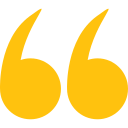
We travelled with Falcon Safaris in Zimbabwe and Botswana for 16 days. Falcon designed a wonderful trip with private guide to the most interesting sites in both countries. The organization of the whole trip was excellent, flights within the country, accommodation and activites. The guides were very knowledgable and told us a lot about the countries, their history, people, economy and much more. We visited the Great Zimbabwe Ruins, the Victoria Falls Tour and a number of national parks in both countries.
Rhino tracking was a real adventure! We had tremendous further game drives and saw very many animals - we did the Big Five. We had much more Victoria Falls Activities than planned and enjoyed very much.We strongly recommend Falcon Safaris to everyone planning a trip to Southern Africa and East Africa.
Wonderful trip to Zimbabwe and Botswana with excellent organization and very competent guides

Our Consultant Vimbai was very helpful and accommodating. We stayed at the Elephant hills hotel which was nothing short of amazing.Our activities included a helicopter flight, dinner cruise as well as a morning game drive. All the activities were absolutely amazing.
Exceptional!

We worked with Gertrude to schedule and organize everything and she did an excellent job. I asked a lot of questions via e-mail and she answered everyone in a timely helpful manner. Our guide at Victoria Falls was also great. He met us at the airport, provided a thoughtful tour of the Falls and got us to our next guide in Botswana. Our lodgings at River View Lodge were just as described- very comfortable and excellent food. All the staff were so pleasant and helpful. If I had to do it again I would arrange a morning boat ride as well. We only did the sunset boat rides and they were the high point of our entire trip- we saw so many animals and our guide was very knowledgeable. Just a great experience. Our lodgings at Oddball's Enclave was rustic and we loved it. So great to disconnect from the world for a bit. Leo, our guide, was the best - got us out and about, saw fantastic wildlife and got back to camp safely each time. Doc manages the camp so well. This whole trip was planned and organized by Falcon Safaris and we could not have been happier.
Fabulous, well planned trip

Falcon safaris have given my the correct advice with excellent service. The only suggestion will be to work closer with the lodges to confirm bookings as soon as possible. We have booked and pay our deposit a year in advance. We have only receive our final convermation from Chobe Safari lodge a week before departure. I do realize its not within your controle but with limit alternatives and a group of 14 people it becomes an issue to find alternative accomodation if the booking was cancelled.
Excellent and efficient service
Explore Our Africa With Customize Your Tour
We love Africa's diversity and create amazing trips for you. With 30+ years of experience, we customize every trip just for you.
